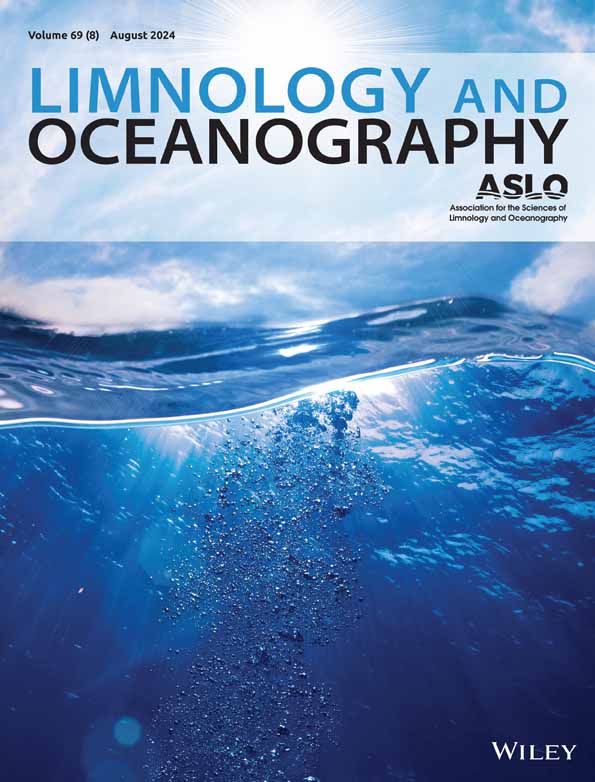人工加热湖泊浮游生物群落的长期变化
IF 3.7
1区 地球科学
Q1 LIMNOLOGY
引用次数: 0
摘要
据预测,地表水温升高和营养物富集会改变浮游生物群落,影响生物多样性和生态系统功能。虽然短期的中生态研究已经报道了温度和养分驱动的影响,但从自然系统中进行的长期观测仍然有限。我们研究了波兰中部10个湖泊的季节性浮游生物群落,其中5个湖泊因电厂排放而升温60年,比对照湖泊(年平均)升温约2°C。从环境DNA (eDNA)相对读丰度来看,加热湖泊的绿藻(绿藻)丰度比加热湖泊高15%,而对照湖泊的金藻(金藻)丰度比加热湖泊高7%。加热后的湖泊中硅藻、绿藻、金藻、尾虫、担子菌和壶菌的多样性较高,特别是在夏季。它们的浮游生物组合成分不同,季节性变化较小。多元回归显示,气温上升与营养物质增加相互作用,减少了许多浮游生物群体的多样性。变暖有利于热适应类群,推动了成分的变化。通过深入了解人为变暖的长期影响,本研究强调了综合温度-营养相互作用在预测生态系统对气候变化的响应中的重要性。本文章由计算机程序翻译,如有差异,请以英文原文为准。
Long‐term changes to plankton communities in artificially heated lakes
Increased surface‐water temperatures and nutrient enrichment are predicted to alter planktonic communities, impacting biodiversity and ecosystem functioning. While short‐term mesocosm studies have reported temperature‐ and nutrient‐driven effects, long‐term observations from natural systems remain limited. We studied seasonal plankton communities in 10 lakes in central Poland, five warmed by power plant discharge for six decades and ~ 2°C warmer (annual mean) than control lakes. Based on environmental DNA (eDNA) relative read abundance, green algae (Chlorophyta) were up to 15% more abundant in heated lakes, while golden algae (Chrysophyceae) were up to 7% more abundant in control lakes. Heated lakes exhibited higher diversity of diatoms, green algae, golden algae, cercozoans, basidiomycetes, and chytrids, especially in summer. Their plankton assemblages were compositionally distinct and showed reduced seasonal variability. Multiple regression revealed that rising temperature, interacting with elevated nutrients, reduced diversity in many plankton groups. Warming favored heat‐adapted taxa, driving compositional shifts. By providing insights into the long‐term impacts of anthropogenic warming, this study underscores the importance of integrating temperature‐nutrient interactions in predicting ecosystem responses to climate change.
求助全文
通过发布文献求助,成功后即可免费获取论文全文。
去求助
来源期刊

Limnology and Oceanography
地学-海洋学
CiteScore
8.80
自引率
6.70%
发文量
254
审稿时长
3 months
期刊介绍:
Limnology and Oceanography (L&O; print ISSN 0024-3590, online ISSN 1939-5590) publishes original articles, including scholarly reviews, about all aspects of limnology and oceanography. The journal''s unifying theme is the understanding of aquatic systems. Submissions are judged on the originality of their data, interpretations, and ideas, and on the degree to which they can be generalized beyond the particular aquatic system examined. Laboratory and modeling studies must demonstrate relevance to field environments; typically this means that they are bolstered by substantial "real-world" data. Few purely theoretical or purely empirical papers are accepted for review.
 求助内容:
求助内容: 应助结果提醒方式:
应助结果提醒方式:


